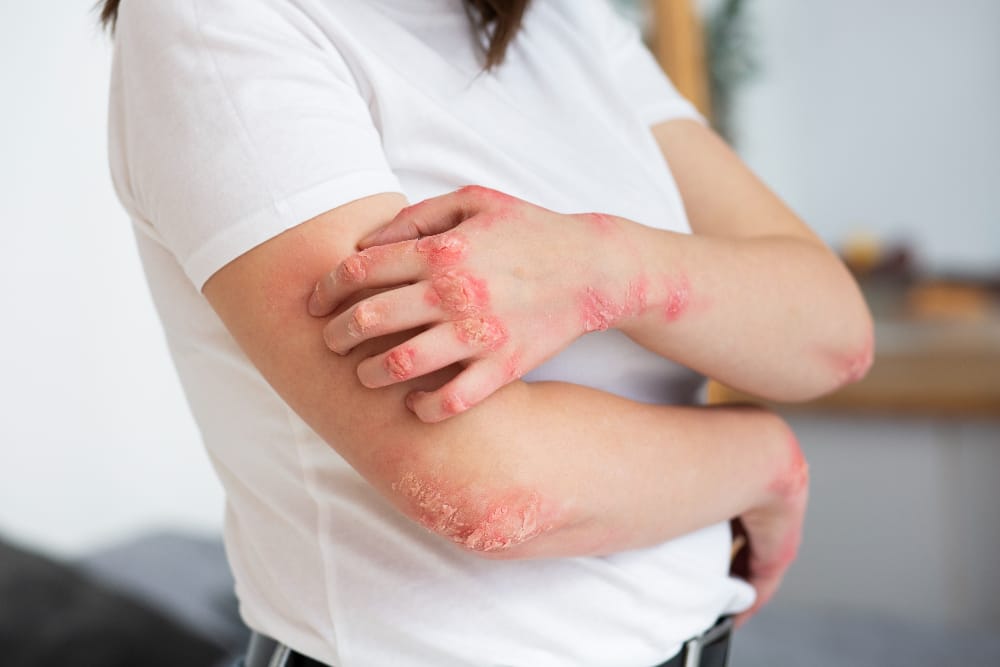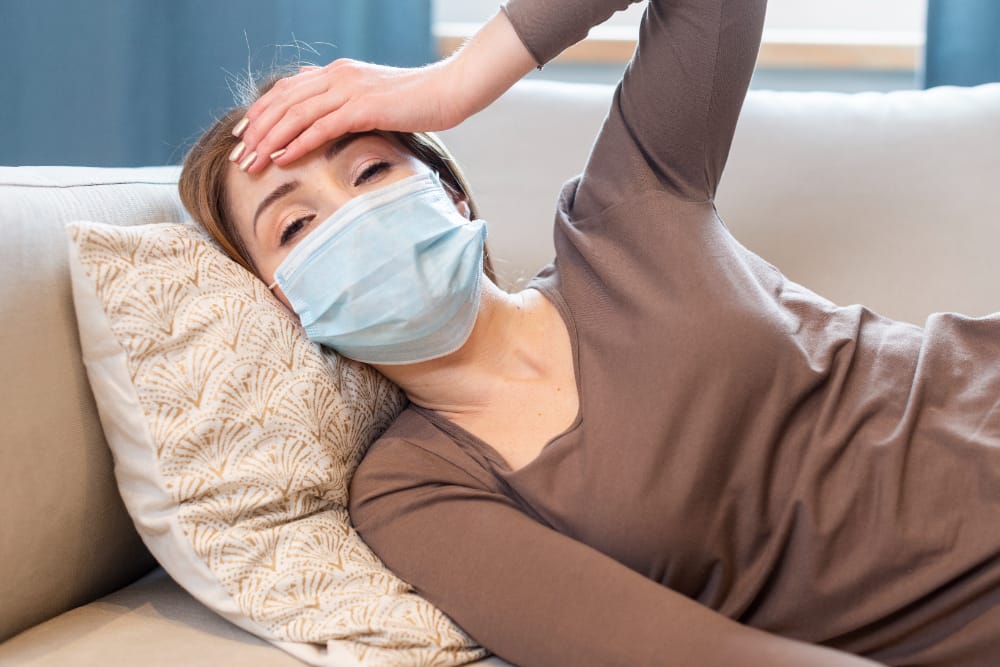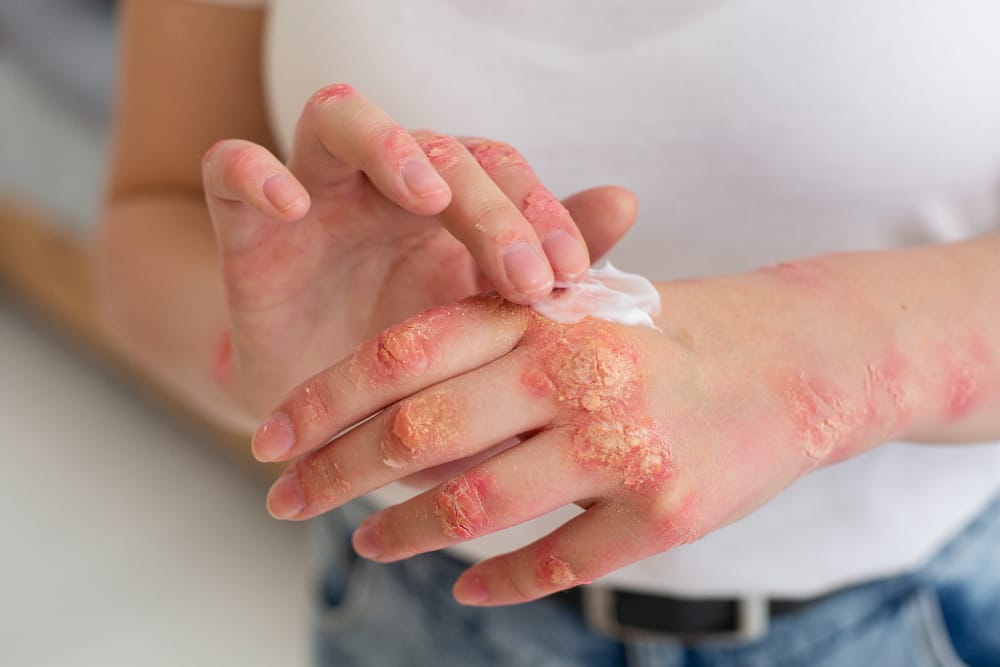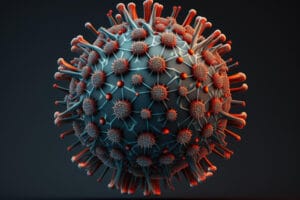Yellow fungus infections, also called mucormycosis, have become a major health concern in recent years, especially for people with weak immune systems. This rare fungal infection is caused by molds called Mucorales, which grow in damp environments and on organic matter. Knowing yellow fungus symptoms and identifying them early is important for preventing serious health problems and getting proper treatment.
What is Yellow Fungus?
Yellow fungus is a fungal infection that usually affects reptiles but can also harm humans under certain conditions. Unlike black fungus or white fungus, yellow fungus grows inside the body before showing any signs on the outside. This makes it hard to detect early, but catching it in time can prevent severe damage to tissues and organs.
This infection happens when mold spores enter the body through breathing, eating, or cuts on the skin. People with health conditions like diabetes, cancer, or those recovering from illnesses like COVID-19 are more likely to get this infection.
Common Yellow Fungus Symptoms
Spotting yellow fungus symptoms early can save lives. Here are the key symptoms to look out for:
1. Loss of Appetite

If someone suddenly stops feeling hungry or eats much less than usual, it could be an early sign of yellow fungus. This can lead to weight loss and make the body weaker.
2. Extreme Tiredness

Feeling very tired or weak without any clear reason is another common symptom. People with this condition often struggle to do even simple daily tasks.
3. Slow Wound Healing
Cuts or injuries that take a long time to heal may be a sign of yellow fungus. The infection affects the body’s ability to repair itself, leaving wounds open and vulnerable to more infections.
4. Pus Leakage
In advanced cases, pus might leak from wounds or infected areas. This shows that the infection is damaging the tissues and requires immediate medical attention.
5. Skin Problems

Some people may notice unusual skin changes like patches of yellow or red discoloration. These spots can indicate that the tissue underneath is being affected by the infection. Consult a skin specialist for advice on unusual skin changes.
6. Nasal Issues

Symptoms like a stuffy nose, sinus pain or yellow colored nasal discharge may mean the infection has spread to the nose or sinuses. This is especially dangerous as it could reach the brain or eyes.
7. Unexplained Fever

A fever that doesn’t go away with usual treatments is another possible sign. The fever happens because the body is trying to fight the infection.
8. Organ Problems
In severe cases, yellow fungus can affect organs like the kidneys or liver. Symptoms may include reduced urine, yellowing of the skin (jaundice), or abnormal blood test results.
9. Facial Swelling
Swelling around the face, especially near the nose or eyes, can mean the infection is spreading. This needs urgent medical care.
10. Breathing Problems
If the fungus affects the lungs, it can cause shortness of breath, chest pain, or wheezing. These symptoms can get worse quickly and should be treated as an emergency.
How to Detect Yellow Fungus Early
Early detection of yellow fungus symptoms can make treatment easier and more effective. Here’s how you can stay alert:
1. Watch for Small Changes
Keep an eye on changes in appetite, energy levels, and how fast wounds heal. Even small changes could be early signs of yellow fungus.
2. Go for Regular Health Check-ups
If you have a condition like diabetes or cancer, regular check-ups are important. Blood tests and scans can help find infections before they get worse.
3. Check Wounds Carefully
Look out for unusual swelling, pus, or discoloration around any injuries. These could be warning signs of yellow fungus symptoms.
4. Pay Attention to Nasal Symptoms
Don’t ignore nasal congestion or yellow discharge that lasts a long time. These symptoms could mean the infection is spreading.
5. Monitor Fevers
If you have a fever that doesn’t go away, see a doctor. This could be a sign that your body is fighting a serious infection like yellow fungus.
6. Notice Breathing Changes
Breathing difficulties, even if mild, should be checked by a healthcare professional. Early detection and treatment can stop the infection from spreading further.
Who is at Risk of Yellow Fungus?
Some people are more likely to get yellow fungus. These include:
- Diabetes Patients: High blood sugar helps the fungus grow. Discover the best dry fruits for diabetic patients to manage blood sugar levels
- Weakened Immune Systems: People with cancer, HIV, or those using steroids are more at risk.
- Post-COVID-19 Patients: Those recovering from COVID-19, especially if treated with steroids, are more vulnerable.
- Poor Hygiene: Living in unclean or damp places can increase the risk of yellow fungus.
- Overuse of Antibiotics: Using too many antibiotics can disturb the body’s natural defenses.
- Malnutrition: Not eating a healthy diet weakens the immune system, making it easier for infections to occur.
Treatment for Yellow Fungus
Yellow fungus infections need quick and proper treatment. The main treatments include:
1. Antifungal Medicines
Doctors often use a drug called Amphotericin B to treat yellow fungus. This medicine is given through an IV in a hospital.
2. Surgery
In severe cases, surgery might be needed to remove infected tissues. This stops the infection from spreading to other parts of the body.
3. Supportive Care
Drinking plenty of water and eating nutritious food can help the body heal. Patients might also need oxygen therapy if the infection affects their lungs.
4. Treat Underlying Issues
Managing conditions like diabetes or improving immunity can lower the risk of the infection coming back.
5. Hospital Stay
Severe infections often require hospital care to monitor the patient closely and avoid complications.
How to Prevent Yellow Fungus
Taking precautions can help you avoid yellow fungus. Here are some simple steps:
1. Keep Yourself and Your Surroundings Clean
Maintain good personal hygiene and keep your home clean and dry. This reduces the chances of mold growth that can lead to yellow fungus.
2. Eat Healthy
A balanced diet with plenty of fruits and vegetables can boost your immune system and reduce the risk of yellow fungus symptoms. Check out tips to boost your immune system naturally.
3. Manage Health Conditions
Take proper care of chronic illnesses like diabetes by following your doctor’s advice. This can reduce your chances of developing yellow fungus.
4. Use Steroids Carefully
Steroids should only be used when prescribed by a doctor. Overusing them can weaken your immune system and make you more vulnerable to yellow fungus symptoms.
5. Wear Protective Gear
If you work in a dusty or moldy environment, use masks and gloves to protect yourself from yellow fungus.
6. Control Humidity Indoors
Use a dehumidifier or air purifier to keep your home free from dampness and mold that can lead to yellow fungus.
Final Thoughts
Yellow fungus symptoms can be dangerous, but recognizing them early can save lives. Watch out for signs like loss of appetite, tiredness, slow healing wounds, nasal issues and breathing problems. High-risk individuals such as those with diabetes or weakened immune systems should be extra careful.
Preventing yellow fungus involves good hygiene, a healthy lifestyle and managing existing health conditions. If you notice any symptoms, don’t wait—see a doctor immediately. Early treatment is the key to stopping the infection and recovering fully. Staying alert to yellow fungus symptoms is crucial for timely medical care and avoiding complications.
Frequently Asked Questions
1. What are the early yellow fungus symptoms?
Early symptoms include loss of appetite, extreme tiredness, slow-healing wounds, and unexplained fever. Identifying these signs early can help prevent severe complications.
2. Who is at risk of developing yellow fungus?
People with diabetes, weakened immune systems, poor hygiene, or those recovering from illnesses like COVID-19 are at higher risk of yellow fungus infections.
3. How is yellow fungus different from black and white fungus?
Yellow fungus grows inside the body and often doesn’t show external symptoms initially, unlike black or white fungus, which are usually visible on the skin or mucous membranes.
4. Can yellow fungus symptoms be treated at home?
No, yellow fungus is a serious condition that requires immediate medical attention. Treatment involves antifungal medications and sometimes surgery.
5. How can I prevent yellow fungus?
Preventive measures include maintaining cleanliness, managing chronic illnesses like diabetes, eating a healthy diet, and avoiding damp environments that encourage mold growth.
Images By: FreePik





Pingback: Symptoms of Weak Eyesight You Should Not Ignore